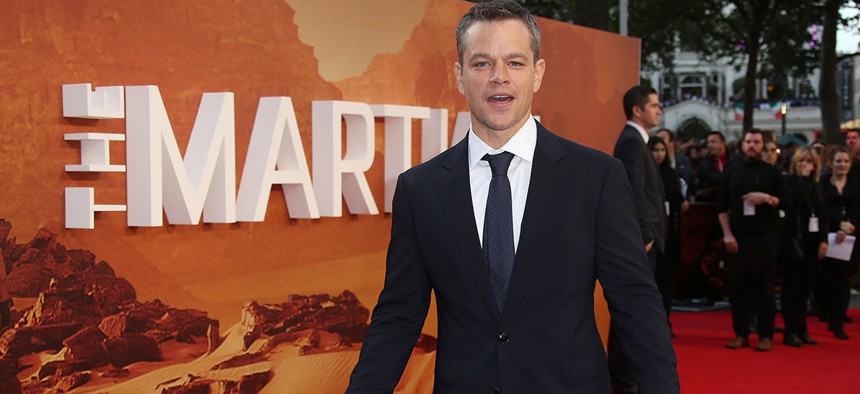Video: NASA Scientists Fact-Check 'The Martian'

Matt Damon, star of "The Martian" Joel Ryan/Invision/AP
Separating the science fiction from the science fact.
The big-budget Hollywood film "The Martian" premiered in theaters across the country this weekend, and NASA is excited. Employees from the space agency, astronaut Tracy Caldwell Dyson and NASA's Director of Planetary Science Jim Green advised on the film.
But how scientifically accurate is the movie exactly? A few other scientists at NASA who had seen the film weighed in.
(Several slight spoilers of "The Martian" below.)
The movie version of the Red Planet's landscape is very accurate, says Jim Erickson, project manager of the Mars Science Laboratory, the robotic space probe that successfully landed the Curiosity Rover on Mars.
Additionally, the use of Mars lander technology in the film is also accurate.
"The astronaut uses the lander as a way to communicate back with Earth," said Rob Manning, the chief engineer of the Mars Science Laboratory. "To do that, he had to plug in a computer that he had on his vehicle to our lander. It turns out, our lander had a port that you could plug in that allowed him to do those exact things!"
What isn't scientifically accurate? The windstorms. Though it creates dramatic moments in the film's story, Mars' lack of atmosphere (compared to the atmosphere on Earth) means that even if winds were blowing 100 miles per hour, it would only feel like the equivalent to a 1 mph wind here on Earth, barely enough breeze to blow back your hair.
What hopefully will soon be accurate is humans actually landing on Mars.
"The first person to touch the surface of Mars is going to be in my lifetime," Erickson said. "I think we can easily do it in twenty years. If we want to, we can do it in less."
To learn more, check out the video below, from Wired:






